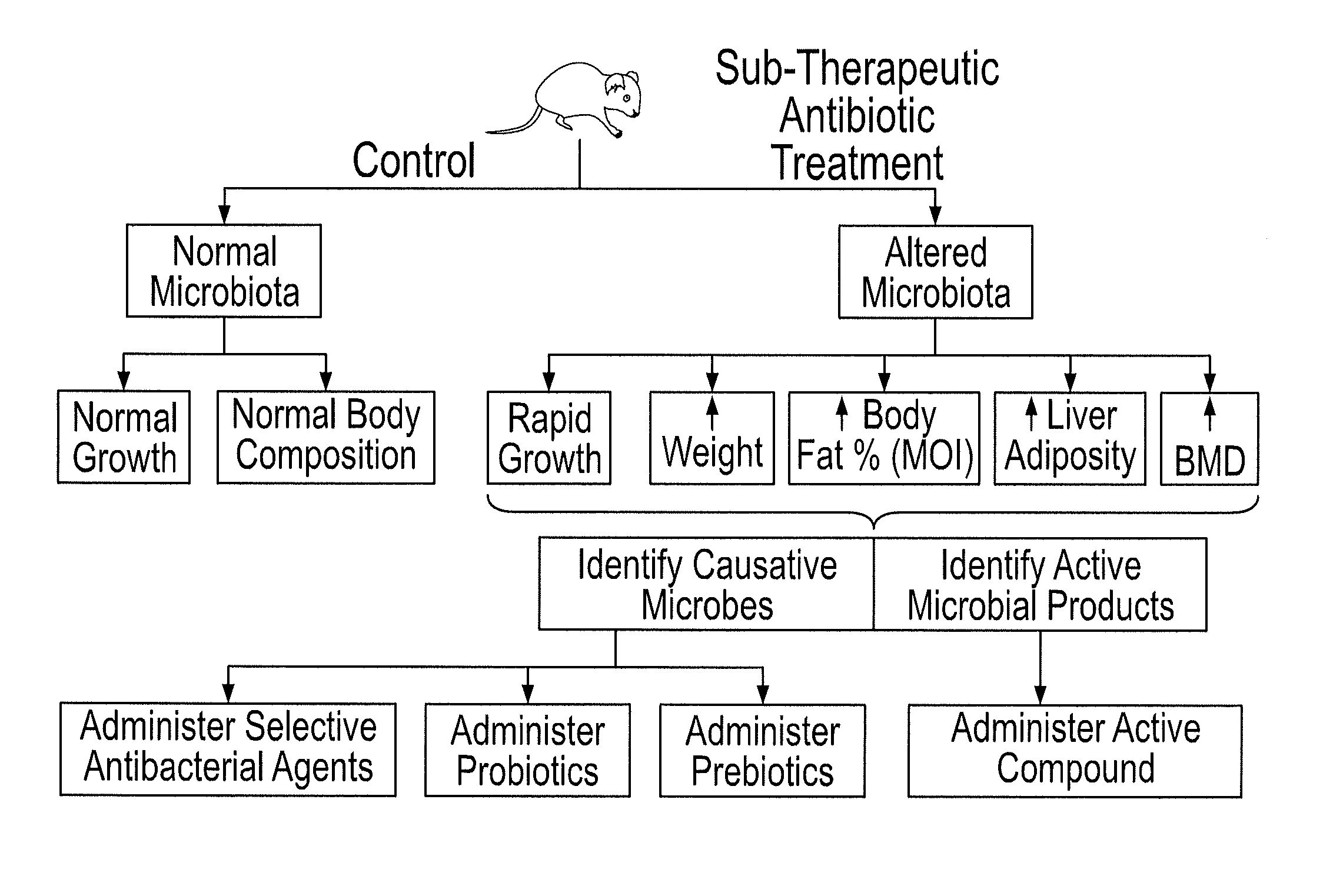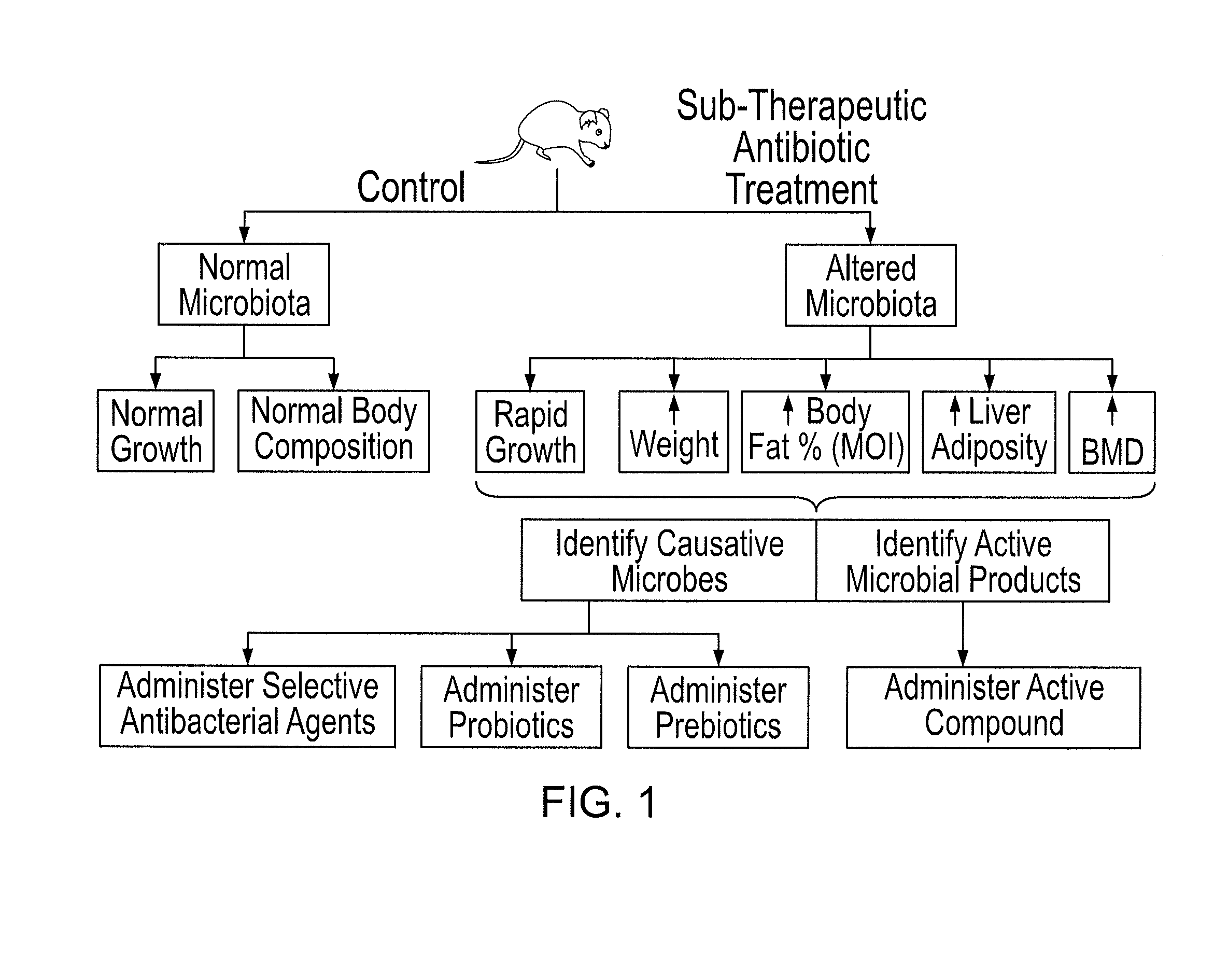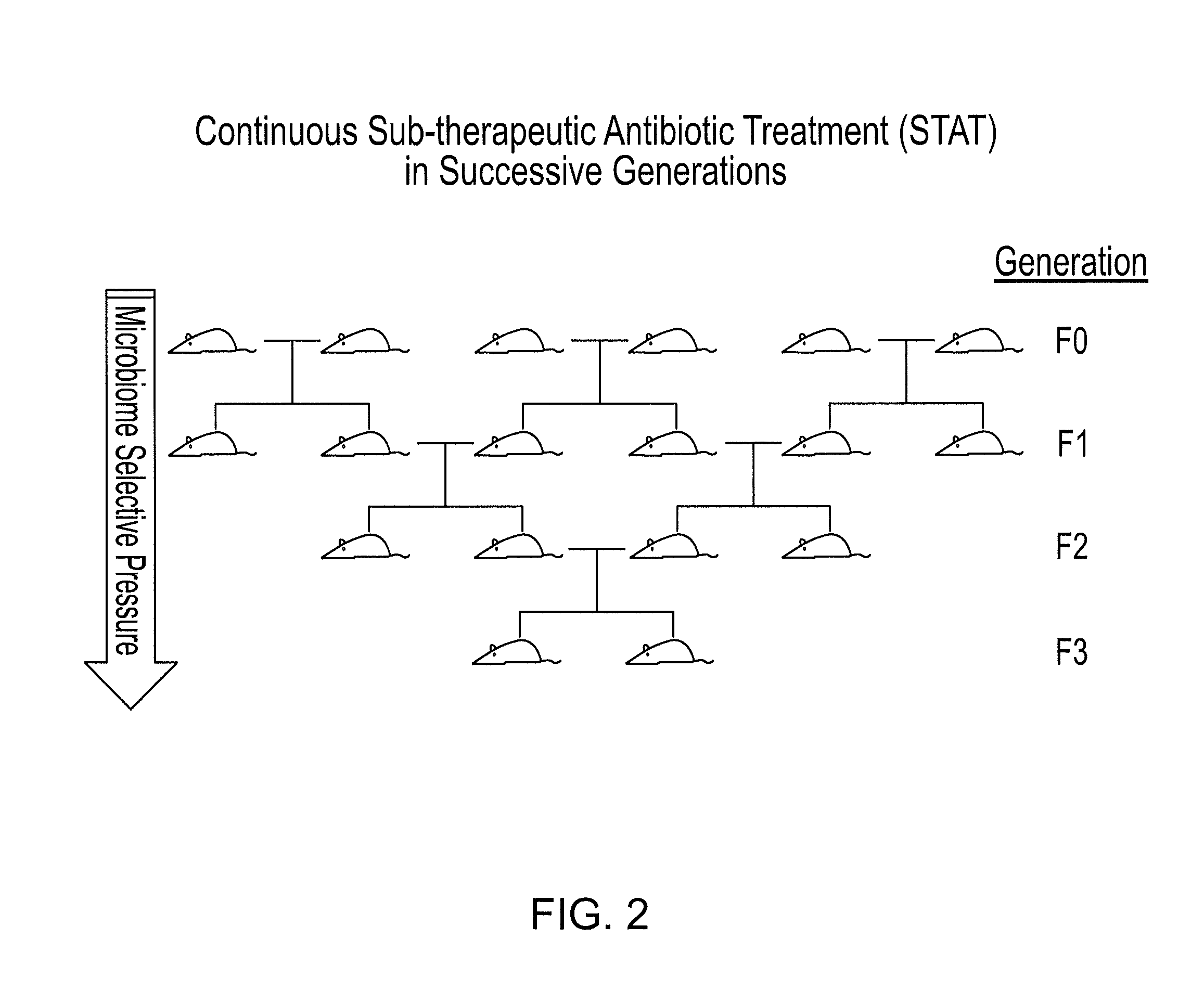Methods for treating bone disorders by characterizing and restoring mammalian bacterial microbiota
a bacterial microbiota and bone disorder technology, applied in the field of characterizing changes in the gastrointestinal microbiota of mammalian bacterial bacteria, can solve the problems of insufficient explanation of the rise in obesity, insufficient understanding or appreciation of the role of bacterial microbiota in these conditions, and high cost of antibiotics, etc., to achieve dramatic increase in antibiotic use
- Summary
- Abstract
- Description
- Claims
- Application Information
AI Technical Summary
Benefits of technology
Problems solved by technology
Method used
Image
Examples
example 1
[0121]FIG. 1 shows the design of the present Microbial Induced Obesity (MIO) experiments, key findings, and applications.
[0122]C57BL6 mice were obtained at 6 weeks of age from Jackson Laboratory for the F0 generation. FIG. 2 shows a breeding scheme of continuous STAT in successive generations. F0 mice were mated and females were exposed to sub-therapeutic antibiotic treatment in the drinking water when pregnancy was detected. F1 generation mice were exposed to continuous STAT throughout life and at 12 weeks of age, mated to produce an F2 generation. Mice from F2 generation will be mated to produce an F3 generation. Mice, and all animals, are born sterile and acquire microbiota from maternal transmission. Successive generations kept on continuous STAT will have increased selective pressure on the intestinal microbiome, and should exhibit even more profound alterations in body composition and phenotype.
[0123]One group of sub-therapeutic penicillin-treated (STPT) mice received antibiot...
example 2
STAT Increases Insulin Levels and a High Fat Diet (HFD) Increases the STAT-Mediated Obesity
[0139]FIGS. 12A-B are graphs showing morphometric and bone development in C57 / C6 mice, in relation to gender (panel A—males; panel B—females), diet, and antibiotic exposure. All mice were raised on normal chow (NC, 13.5% kcal from fat) then at 17 weeks of age, half of the mice were continued on LFD and half were switched to high fat diet (HFD, 45% kcal from fat). Panel A males, Panel B females: total mass, fat mass, lean mass, bone mineral content, bone area, and bone mineral density. Arrow indicates change in diet for mice on HFD.
[0140]FIGS. 13A-B show fasting blood insulin levels in (A) male and (B) female 30-week old C57 / B6 mice. Mice were either control (C) water or sub-therapeutic antibiotic treated (S) with penicillin from birth. All mice were raised on normal chow (LFD, 13.5% kcal from fat) then at 17 weeks of age, half of the mice were continued on LFD and half were switched to high fa...
example 3
STAT Alters Composition of Intestinal Microbiota
[0141]To assess microbial populations in the STAT and control microbiomes, the relative distribution of taxonomic groups based on 16S rRNA v3 region sequence data were analyzed. The extracted DNA was subjected to 454 pyrosequencing, yielding 555,000 readable v3 sequences (5784±676 sequences / sample with mean length 188±3 bp). The sequences were analyzed at multiple (Phylum→Family) taxonomic levels (FIG. 14).
[0142]In both fecal and cecal samples, the ratio of Firmicutes to Bacteria was significantly elevated in the STAT mice compared to controls. Heat map visualization of the Unifrac distances that define population structure showed a non-random distribution of STAT and control mice (p<0.05). Importantly, deep phylogenetic branching was identified, with the mean weights of mice on the two heat map major branch points significantly (p<0.05) different (21.4+3.1% (upper) vs. 23.0+2.8% (lower)). A major contributor to the observed difference...
PUM
 Login to View More
Login to View More Abstract
Description
Claims
Application Information
 Login to View More
Login to View More - R&D
- Intellectual Property
- Life Sciences
- Materials
- Tech Scout
- Unparalleled Data Quality
- Higher Quality Content
- 60% Fewer Hallucinations
Browse by: Latest US Patents, China's latest patents, Technical Efficacy Thesaurus, Application Domain, Technology Topic, Popular Technical Reports.
© 2025 PatSnap. All rights reserved.Legal|Privacy policy|Modern Slavery Act Transparency Statement|Sitemap|About US| Contact US: help@patsnap.com



